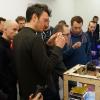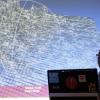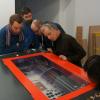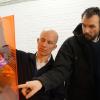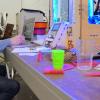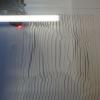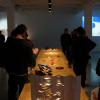Generator.x 3.0 : from code to atoms
An openLAB Masterclass with Marius Watz
Participants will explore how software processes can be combined with digital fabrication to produce physical objects that are the result of dynamic software systems, opening new fields for artists, designers and other creative people. Specifically, we will look at how generative systems can be used to create objects according to a programmed logic, allowing for great complexity and a semi-automated model of creativity.
Digital fabrication drastically changes manufacturing by democratizing access to industrial tools as well as changing the way objects are produced, opening the door for the on-demand creation of bespoke objects. Combined with the “craft” of code it becomes possible to directly connect parametric software processes to an instant manufacturing workflow, turning bits into atoms and introducing a paradigm that is radically different from traditional 3D modeling.
Generative systems shift the focus from static models towards a computational logic – what Bruce Sterling calls processuality. Here objects are understood as mere instances of a family of forms, produced by a specific interaction of parameters. Such forms may be data-driven or created through interactive means, adapting to conditions coded into the system. The artist becomes a “gardener” of possible forms, harvesting desirable results in an iterative process of coding and prototyping.
This openLAB is the evolution of ‘Generator.x 2.0: Beyond the Screen’, a workshop and exhibition that took place in Berlin during Transmediale 2008. Generator.x is a curatorial platform set up to explore the implications of computational aesthetics, and these workshops are intended to function both as discourse and practice.
For Brussels in 2012 we propose to use the latest low-cost 3D Printers (Makerbots) as well as a large and powerful laser cutter machine and a CNC milling machine. The main software tool will be Processing, but we also welcome users of other coding tools like VVVV, PD or OpenFrameworks. The workshop will be hands-on and geared towards producing projects ready for exhibition at the end of the project. Participants will be expected to be familiar with code and generative strategies (pairs of participants with complementary skills are welcome, eg. a visual artists/designer and a developer). There will be an introduction reminding certain software techniques as well as software and hardware assistants helping the participants in the elaboration and production of their own work.
More info: www.imal.org/activity/generatorx3

















